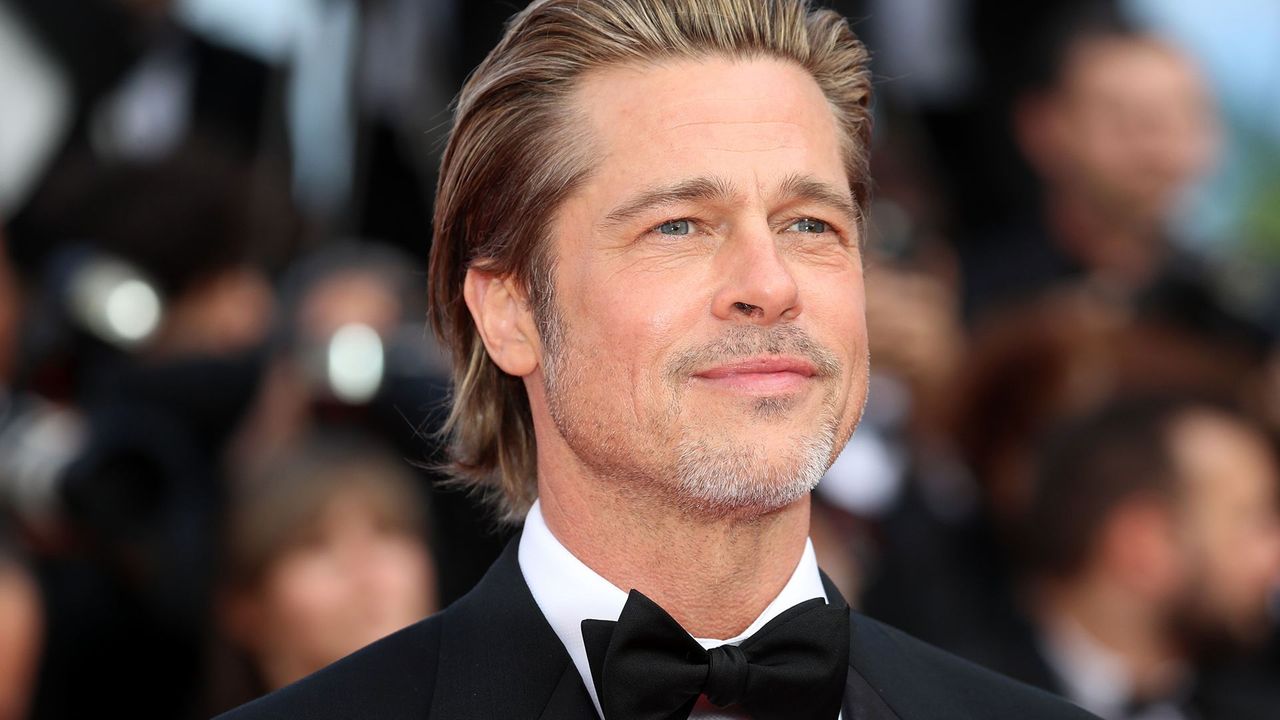Brad Pitt: The Evolution of Hollywood’s Golden Boy

When you think of modern Hollywood royalty, few names carry the weight and charisma that Brad Pitt does. For over three decades, this Missouri-born actor has captivated audiences worldwide, evolving from a charming heartthrob into one of cinema’s most respected performers and producers. His journey through Tinseltown reads like a masterclass in reinvention, artistic growth, and the delicate balance between commercial appeal and critical acclaim.
The Making of a Star: Early Life and Career Beginnings
Born William Bradley Pitt on December 18, 1963, in Shawnee, Oklahoma, and raised in Springfield, Missouri, Brad Pitt’s path to stardom wasn’t exactly conventional. Growing up in a conservative Baptist household with his father Bill, a trucking company manager, and his mother Jane, a school counselor, young Brad seemed destined for a more traditional Midwestern life. He excelled in sports, participated in school musicals, and even pursued journalism and advertising at the University of Missouri.
The turning point came just two weeks before his graduation in 1986, when Pitt made the bold decision to drop out and chase his Hollywood dreams with just $325 in his pocket. This leap of faith led him to Los Angeles, where he took acting lessons while working odd jobs – from driving strippers to parties to dressing as a giant Brad Pitt chicken for El Pollo Loco. These humble beginnings would later inform his grounded approach to fame and his genuine connection with blue-collar characters on screen.
His early television appearances on shows like “Dallas,” “21 Jump Street,” and “Growing Pains” showcased a natural screen presence that couldn’t be ignored. However, it was his breakout role as the charming drifter J.D. in Ridley Scott’s “Thelma & Louise” (1991) that truly launched his career. That iconic scene – you know the one, with the cowboy hat and those abs – didn’t just make hearts flutter; it announced the arrival of a new kind of leading man who could blend vulnerability with undeniable magnetism.
Rise to Prominence: The Heartthrob Years
The 1990s belonged to Brad Pitt in many ways, as he navigated the treacherous waters of sudden fame while building a diverse filmography. Following “Thelma & Louise,” he could have easily been typecast as the pretty boy, but Pitt demonstrated remarkable instincts in choosing roles that challenged both him and audiences’ expectations. His vampire Louis in “Interview with the Vampire” (1994) opposite Tom Cruise showcased Brad Pitt his ability to embrace darker, more complex characters while maintaining his leading man appeal.
“Legends of the Fall” (1994) solidified his status as a romantic lead, with his portrayal of Tristan Ludlow becoming the stuff of teenage dreams and adult fantasies alike. The film’s sweeping epic nature and Pitt’s committed performance proved he could carry a big-budget period piece, while his natural chemistry with co-stars demonstrated the effortless charisma that would become his trademark. Critics might have dismissed some of these early films as style over substance, but Pitt was quietly learning his craft and building the Brad Pitt foundation for more ambitious work to come.
The latter half of the decade saw him taking increasingly bold choices, from the psychological thriller “Se7en” (1995) alongside Morgan Freeman to Terry Gilliam’s time-travel mind-bender “12 Monkeys” (1995), which earned him his first Academy Award nomination. These films proved that beneath the magazine-cover good looks was a serious actor willing to take risks and collaborate with visionary directors. His ability to disappear into roles while maintaining his star power became a defining characteristic Brad Pitt that would serve him well throughout his career.
Critical Acclaim and Career Evolution

As the new millennium dawned, Brad Pitt entered what many consider his golden period as an actor. Gone was any remaining stigma about being just another pretty face – he had evolved into a performer capable of carrying complex narratives and delivering nuanced performances that resonated with both critics and audiences. “Fight Club” (1999), though initially controversial and commercially disappointing, has since become a Brad Pitt cultural touchstone that perfectly captured millennial angst and Pitt’s range as an actor.
His collaboration with director David Fincher in “Fight Club” marked the beginning of a new phase in his career, one where he actively sought out challenging material and unconventional directors. The Ocean’s trilogy, beginning with “Ocean’s Eleven” (2001), showcased his comedic timing and natural chemistry with ensemble casts, while films like “Babel” (2006) and “The Curious Case of Benjamin Button” (2008) demonstrated his Brad Pitt commitment to ambitious, artistically driven projects. These weren’t just roles; they were statements about the kind of actor he wanted to be.
The critical turning point came with “Moneyball” (2011), where Pitt not only starred as Oakland Athletics general manager Billy Beane but also served as producer. His portrayal of the baseball executive who revolutionized the sport through statistical analysis earned him widespread critical praise and another Oscar nomination. The film perfectly married Pitt’s natural everyman appeal with sophisticated storytelling, Brad Pitt proving that he had matured into an actor capable of carrying intelligent, adult dramas without sacrificing commercial viability.
Behind the Scenes: Producer and Entrepreneur
While Brad Pitt’s on-screen achievements are well-documented, his behind-the-scenes work as a producer has been equally impressive and perhaps more personally fulfilling. In 2001, he co-founded Plan B Entertainment with then-wife Jennifer Aniston and producer Brad Grey, though he later became the sole owner. The Brad Pitt production company has since become synonymous with quality filmmaking, backing projects that combine commercial appeal with social consciousness and artistic integrity.
Plan B’s filmography reads like a greatest hits collection of 21st-century cinema: “The Departed” (2006), “12 Years a Slave” (2013), “Selma” (2014), “Moonlight” (2016), and “Minari” (2020), among others. These films haven’t just been critical darlings; they’ve tackled important social issues while maintaining broad audience appeal. Pitt’s vision as a producer extends beyond profit margins to include stories that matter, voices that need to be heard, and filmmakers who deserve support.
His entrepreneurial spirit extends beyond entertainment into various business ventures, including architecture and sustainable building. His involvement in rebuilding New Orleans’ Lower Ninth Ward after Hurricane Katrina through his Make It Right Foundation demonstrated a commitment to social causes that goes far beyond typical celebrity charity work. Though the foundation later faced criticism and legal challenges, Pitt’s initial dedication to the project showed genuine engagement with important issues rather than superficial celebrity activism.
Personal Life in the Spotlight
Brad Pitt’s personal life has been tabloid fodder for decades, but it’s also provided insight into how he’s navigated fame while maintaining his humanity. His high-profile relationships – from Gwyneth Paltrow to Jennifer Aniston to Angelina Jolie – have been scrutinized relentlessly, yet he’s generally handled the attention with remarkable grace and dignity. The “Brangelina” phenomenon, in particular, became a cultural obsession that overshadowed both actors’ professional work at times.
His marriage to Angelina Jolie from 2014 to 2016 (though they were together from 2005) represented more than just a celebrity power couple; they became global ambassadors for humanitarian causes, with Pitt supporting Jolie’s work as a UN Goodwill Ambassador and later Special Envoy. Their joint efforts in various charitable endeavors showed a side of celebrity that focused on using fame for positive change rather than mere self-promotion.
The subsequent divorce and custody battle, while painful and public, revealed Pitt’s commitment to personal growth and accountability. His openness about struggles with alcohol and his journey through therapy demonstrated a vulnerability that resonated with many fans who had watched him evolve from young heartthrob to mature adult dealing with real-life challenges. This transparency has only enhanced his authenticity as both a person and a performer.
Recent Work and Continued Relevance
In recent years, Brad Pitt has entered what might be called his elder statesman phase, choosing roles that reflect both his accumulated wisdom and his continued passion for the craft. His Oscar-winning performance as stuntman Cliff Booth in “Once Upon a Time in Hollywood” (2019) was a masterclass in understated cool, perfectly capturing the laid-back confidence of a man comfortable in his own skin. The role felt like a natural fit, almost as if Quentin Tarantino had written it specifically for this version of Brad Pitt.
His work in “Ad Astra” (2019) showcased his ability to carry a contemplative, almost philosophical science fiction film that relied heavily on internal performance and subtle emotional beats. While the film divided critics and audiences, Pitt’s committed performance anchored what was essentially a meditation on masculinity, family, and purpose. These choices reflect an actor who’s no longer concerned with conventional leading man roles but is instead interested in exploring different aspects of the human experience.
Looking forward, Pitt continues to balance acting with producing, using his industry clout to support emerging filmmakers and important stories. His recent projects show no signs of slowing down, and his ability to remain relevant across multiple generations of moviegoers speaks to both his adaptability and enduring appeal. Whether he’s appearing in a big-budget action film or an intimate character study, Pitt brings a professionalism and presence that few actors can match.
The Legacy of an Icon
As Brad Pitt approaches his seventh decade, his impact on popular culture and cinema becomes increasingly clear. He represents a unique breed of movie star – one who successfully navigated the transition from teen heartthrob to serious actor to respected producer without losing the essential qualities that made him appealing in the first place. His career serves as a template for how to age gracefully in Hollywood while continuing to take creative risks and support meaningful projects.
Perhaps most importantly, Pitt has demonstrated that lasting success in Hollywood requires more than just good looks and charisma. It demands intelligence, adaptability, and a genuine passion for the craft of filmmaking. His evolution from the pretty boy of “Thelma & Louise” to the Oscar-winning producer of “12 Years a Slave” represents one of the most successful career transformations in modern Hollywood history.
Brad Pitt’s story is far from over, but his legacy is already secure. He’s proven that movie stars can be more than just entertainers – they can be artists, activists, and entrepreneurs who use their platform to make a positive impact on the world. In an industry often criticized for its superficiality, Pitt has managed to maintain depth, authenticity, and relevance for over three decades. That, perhaps more than any single performance or accolade, is the true measure of his success.



